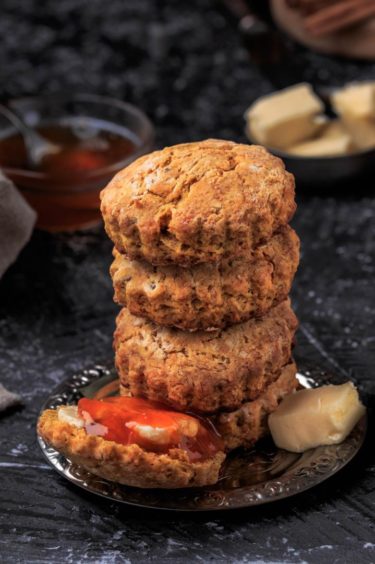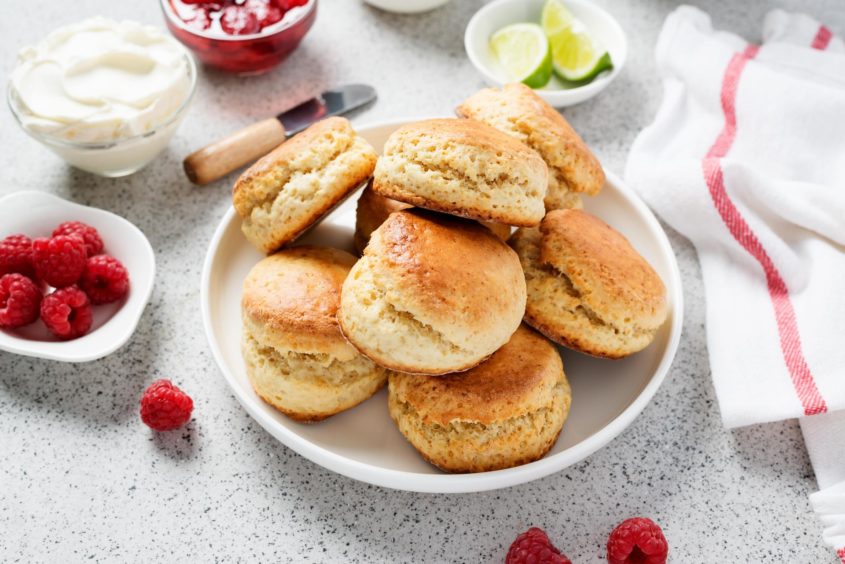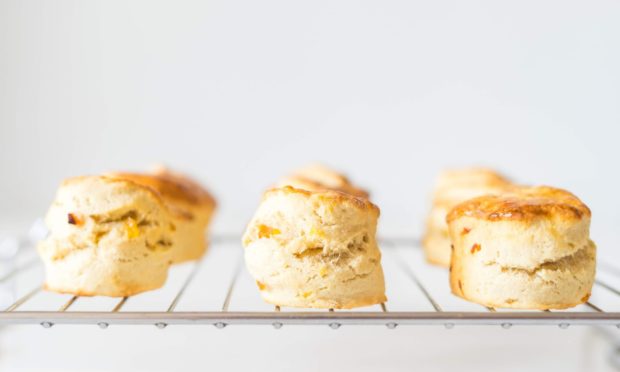Aunt Kate is back with two more scone recipes, one of our all-time favourite baked good treats.
Back in June 2020 we featured two scone recipes from Aunt Kate’s Kitchen, in which she told us how to make a Glasgow Scone and a Tea Scone.
This time around, we’re showcasing two more of her scone recipes from her 1933 Baking Book, but this time they are a bit more traditional – a spiced scone perfect for the festive and winter period, as well as a more common cream scone which is ideal for a teatime treat.
Aunt Kate, the “original domestic goddess“, who wrote recipes and household tips for the People’s Journal and the People’s Friend, wasn’t unfazed when it came to scones, with an entire page in her baking book being dedicated to the treats.
She also wrote in-depth tips about how to make the perfect scone, which can be read here.
For more inspiration, take a look at the previous recipes from Aunt Kate here.
Spiced scones

Ingredients
- 2 teacupfuls (approx 113g) flour
- 1 tsp cream of tartar
- 1 tsp ginger
- 1 dessertspoonful sugar
- 1 tbsp treacle
- 1 tsp bicarbonate of soda
- 1 tsp salt
- 1 tsp ground cinnamon
- 1 oz (approx 28g) butter
- Buttermilk
Method
- Mix the dry ingredients together.
- Heat the butter and treacle and add to the dry ingredients. Mix with enough buttermilk to make a soft dough.
- Turn half the dough on to a floured board, sprinkle a little flour on top, then work gently with the fingers into a round ½ inch in thickness.
- Cut into four and fire on a moderately hot girdle.
- Proceed in the same way with the remainder of the dough.
Cream scones

Ingredients
- ½ lb flour
- 1 oz (approx 28g) butter
- 1 tsp baking powder
- 1 egg
- 1 gill (approx 140ml) sour cream
- A pinch of salt
Method
- Sieve the flour, salt and baking powder into a basin.
- Rub in the butter with the fingertips until free from lumps.
- Make a well in the centre and pour in the egg and cream, beaten together. Mix from the centre outwards, gradually working in the flour.
- Turn the dough on to a floured board, and knead lightly until free from cracks.
- Roll out to ½ inch in thickness, cut into triangles and bake on a greased tin in the oven.
- When ready, split, spread with butter and serve hot.
More in this series…
Aunt Kate’s Kitchen: Go bananas for these baking recipes from the 1930s
Aunt Kate’s Kitchen: Two ginger biscuit recipes from the 1930s that you need to make this month
